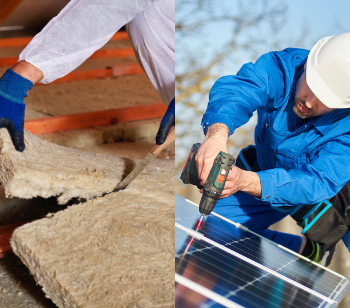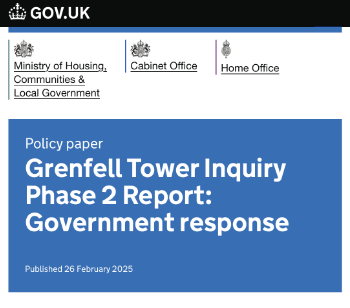Design, construction and climate mitigation
Contents |
[edit] Introduction and the IPCC report
The third and final report Mitigation of Climate Change (MCC) from The Intergovernmental Panel on Climate Change or IPCC has been published and may now not be updated for another 5 or 6 years. It will be concluded with the synthesis report to be published at the end of 2022 and after some delays, because of its wording, the message is coolly, clearly and convincingly put forward. Reducing emissions is and has been shown to be possible but the scale needs to be dramatically and immediately expanded if this last opportunity to stay on a reduced warming path is to be taken. The content of this article and some text comes from the Summary for Policymakers of that 2022 MCC IPCC report. See links below for more detail.
This is the first time the report includes social aspects of mitigation, the demand for service, innovation, technology development, and transfer. It acknowledges the growing role of non-state and sub-national actors including in particular, cities, businesses, citizens, local communities, youth, and indigenous peoples, as well as transnational initiatives, and public-private entities. It covers implications in the short -2030, medium - 2050, and long term 2100, combining assessment of pledges, actions, actual reductions and potentially resulting temperatures.
Cross working groups helped provide a broader basis for the report including the societal relationships of shifting development pathways towards sustainability, integrating climate, risks, adaptation, and mitigation. It acknowledges the spread of climate policies, the reductions in the cost of existing and emerging low emission technologies, along with the variety of types and levels of mitigation efforts that are ongoing. As a measuring stick, it also acknowledges the sustained reductions in greenhouse gas (GHG) emissions in some countries, as well as the impacts of, and lessons from, the COVID-19 pandemic.
Rooting climate change mitigation action in the development aspirations of the societies within which it takes place, designed and conducted in the context of sustainable development, equity, and poverty eradication, will be more acceptable, durable, and effective. Importantly economic efficiency includes the benefits of avoided impacts on ethics and equity, the interlinked technological and social transition processes; and socio-political frameworks of institutions and governance.
Now with up to 70% of emissions coming from cities, the report is clear that achieving net-zero city emissions is possible, but only if emissions are reduced within and outside of administrative boundaries through supply chains. This needs to happen by reducing or changing energy and material consumption, electrification, and enhancing carbon uptake and storage in the urban environment.
Here we try to give some of the key points from the report that relate to the design and construction of buildings.
[edit] Recent developments and current trends
Essentially greenhouse gas (GHG) emissions from 2010-2019 were higher than in any previous decade, but the rate of growth was lower than that between 2000 and 2009.
Regional variations are wide but also between similar income households where 10% of households with highest per capita emissions contribute a disproportionate share of household emissions.
Global emissions in 2030 associated with nationally determined contributions (NDCs) would make it likely that warming will exceed 1.5°C during the 21st century. Limiting below 2°C would then rely on a rapid acceleration of mitigation efforts after 2030. Current policies to be implemented by 2020 are projected to result in emissions higher than the NDCs.
On the other hand at least 18 countries have managed sustained reductions for 10 years.
[edit] System transformations to limit global warming
Without strengthening post-2020 policies, emissions are projected to rise beyond 2025, leading to global warming of 3.2 [2.2 to 3.5] °C by 2100. Global net zero is reached by 2050 in modeled pathways which limits warming to 1.5°C (limited by overshoots) and by 2070 in modeled pathways limiting warming to 2°C.
The strategies modeled include a transition from fossil fuels to very low- or zero-carbon energy sources, such as renewables as well as carbon capture and storage (CCS), demand-side measures, improving efficiency, reducing non-CO2 emissions, and deploying carbon dioxide removal (CDR) methods to counterbalance residual GHG emissions.
Net-zero CO2 emissions from the industrial sector are challenging but possible. This needs action throughout value chains to promote all options, including demand management, energy and materials efficiency, circular material flows, as well as abatement technologies and transformational changes in production processes. Industry reduction can be enabled by adapted processes that use electricity, hydrogen as well as carbon management.
Urban areas can create opportunities to increase resource efficiency, significantly reducing emissions through systemic transition of infrastructure and urban form through low-emission development pathways towards net-zero emissions. Ambitious mitigation efforts for established, rapidly growing and emerging cities will encompass 1) reducing or changing energy and material consumption, 2) electrification, and 3) enhancing carbon uptake and storage in the urban environment.
Cities can achieve net-zero emissions, but only if emissions are reduced within and outside of their administrative boundaries through supply chains, which will have beneficial cascading effects across other sectors. In modeled global scenarios, existing buildings, if retrofitted, and buildings yet to be built, are projected to approach net-zero GHG emissions in 2050 if policy packages, are effectively implemented and barriers to decarbonisation are removed.
Some policies increase the risk of lock-in buildings in carbon for decades while well-designed and effectively implemented mitigation interventions, in new buildings and existing ones if retrofitted, have significant potential to contribute to achieving SDGs in all regions while adapting buildings to future climate.
Demand-side options and low emissions technologies can reduce transport sector emissions in developed countries and limit emissions growth in developing countries. Demand-focused interventions can reduce demand for all transport services and support the shift to energy-efficient modes. Electric vehicles powered by low emission electricity offer the largest decarbonisation potential for land-based transport, on a life cycle basis.
Sustainable biofuels can offer additional mitigation benefits in land-based transport in the short and medium term. Sustainable biofuels, low emission hydrogen, and derivatives (including synthetic fuels) can support mitigation of CO2 emissions from shipping, aviation, and heavy-duty land transport but require production process improvements and cost reductions. Many mitigation strategies in transport would have co-benefits, including air quality improvements, health benefits, equitable access to transportation services, reduced congestion, and reduced material demand.
Agriculture farming and other land use (FAOLU) mitigation options, when sustainably implemented, can deliver large-scale reductions and enhanced removal, but cannot fully compensate for delayed action in other sectors.
Sustainably sourced agricultural and forest products can be used instead of more GHG-intensive products in other sectors. Barriers to implementation and trade-offs may result from the impacts of climate change, competing for demands on land, conflicts with food security and livelihoods, the complexity of land ownership and management systems, and cultural aspects.
There are many country-specific opportunities to provide co-benefits (such as biodiversity conservation, ecosystem services, and livelihoods) and avoid risks (for example, through adaptation to climate change). Demand-side mitigation encompasses changes in infrastructure use, end-use technology adoption, and socio-cultural and behavioral change.
Demand-side measures and new ways of end-use service provision can reduce global GHG emissions in end use sectors by 40-70% by 2050 compared to baseline scenarios, while some regions and socioeconomic groups require additional energy and resources. Demand side mitigation response options are consistent with improving basic wellbeing for all.
[edit] Linkages between mitigation, adaptation, and sustainable development
There is a strong link between sustainable development, vulnerability, and climate risks. Limited economic, social and institutional resources often result in high vulnerability and low adaptive capacity, especially in developing countries.
Several response options deliver both mitigation and adaptation outcomes, especially in human settlements, land management, and in relation to ecosystems. Enhanced mitigation and broader action to shift development pathways towards sustainability will have distributional consequences within and between countries.
Attention to equity, broad and meaningful participation of all relevant actors in decision-making at all scales can build social trust, and deepen and widen support for transformative changes.
[edit] Strengthening the response
There are mitigation options which are feasible to deploy at scale in the near term. Feasibility differs across sectors and regions, and according to capacities and the speed and scale of implementation.
Barriers and enablers include geophysical, environmental-ecological, technological, and economic factors, and especially institutional and socio-cultural factors. available mitigation responses, and enable the pursuit of synergies with development objectives.
Actions can be taken now to shift development pathways and accelerate mitigation and transitions across systems. Climate governance is most effective when it integrates multiple policy domains, helps realise synergies minimize trade-offs, connecting national and sub-national policy-making.
Effective, equitable climate governance builds on engagement with civil society, political actors, businesses, youth, labour, media, Indigenous Peoples and communities. Regulatory and economic instruments have already been deployed successfully. Instrument design can help address equity and other objectives. These could support deep emissions reductions and stimulate innovation if scaled up and applied more widely.
Tracked financial flows fall short of the levels needed to achieve mitigation goals across all sectors and regions. The challenge of closing gaps is largest in developing countries as a whole. Scaling up mitigation financial flows can be supported by clear policy choices and signals from governments and the international community.
This article is based on the outputs of the IPCC Working Group I and its contribution to the sixth assessment report in the report, Climate Change 2022: Mitigation of Climate Change released on 4 April 2022.
[edit] Related articles on Designing Buildings
- Climate Change 2021: The Physical Science Basis IPCC report
- Climate Change 2022: Impacts, Adaptation and Vulnerability IPCC report
- Climate Change 2022: Mitigation of Climate Change IPCC report
- Climate change science.
- Chlorofluorocarbons CFCs.
- COP21 Paris 2015.
- CRC Energy Efficiency Scheme.
- Earth overshoot day.
- Energy Act.
- Energy Related Products Regulations.
- Environmental consultant.
- Environmental impact assessment.
- Environmental legislation.
- Intergovernmental Panel on Climate Change IPCC
- ICE launches engineering route map to deliver UN SDGs.
- Mean lean green.
- Smart cities.
- Sustainable development.
- Sustainability.
- Sustainable materials.
- The future of UK power generation.
- Zero carbon homes.
- Zero carbon non-domestic buildings.
[edit] External references
Featured articles and news
CIOB student competitive construction challenge Ireland
Inspiring a new wave of Irish construction professionals.
Challenges of the net zero transition in Scotland
Skills shortage and ageing workforce hampering Scottish transition to net zero.
Private rental sector, living standards and fuel poverty
Report from the NRH in partnership with Impact on Urban Health.
.Cold chain condensing units market update
Tracking the evolution of commercial refrigeration unit markets.
Attending a conservation training course, personal account
The benefits of further learning for professsionals.
Restoring Alexander Pope's grotto
The only surviving part of his villa in Twickenham.
International Women's Day 8 March, 2025
Accelerating Action for For ALL Women and Girls: Rights. Equality. Empowerment.
Lack of construction careers advice threatens housing targets
CIOB warning on Government plans to accelerate housebuilding and development.
Shelter from the storm in Ukraine
Ukraine’s architects paving the path to recovery.
BSRIA market intelligence division key appointment
Lisa Wiltshire to lead rapidly growing Market Intelligence division.
A blueprint for construction’s sustainability efforts
Practical steps to achieve the United Nations Sustainable Development Goals.
Timber in Construction Roadmap
Ambitious plans from the Government to increase the use of timber in construction.
ECA digital series unveils road to net-zero.
Retrofit and Decarbonisation framework N9 launched
Aligned with LHCPG social value strategy and the Gold Standard.
Competence framework for sustainability
In the built environment launched by CIC and the Edge.
Institute of Roofing members welcomed into CIOB
IoR members transition to CIOB membership based on individual expertise and qualifications.
Join the Building Safety Linkedin group to stay up-to-date and join the debate.
Government responds to the final Grenfell Inquiry report
A with a brief summary with reactions to their response.
























